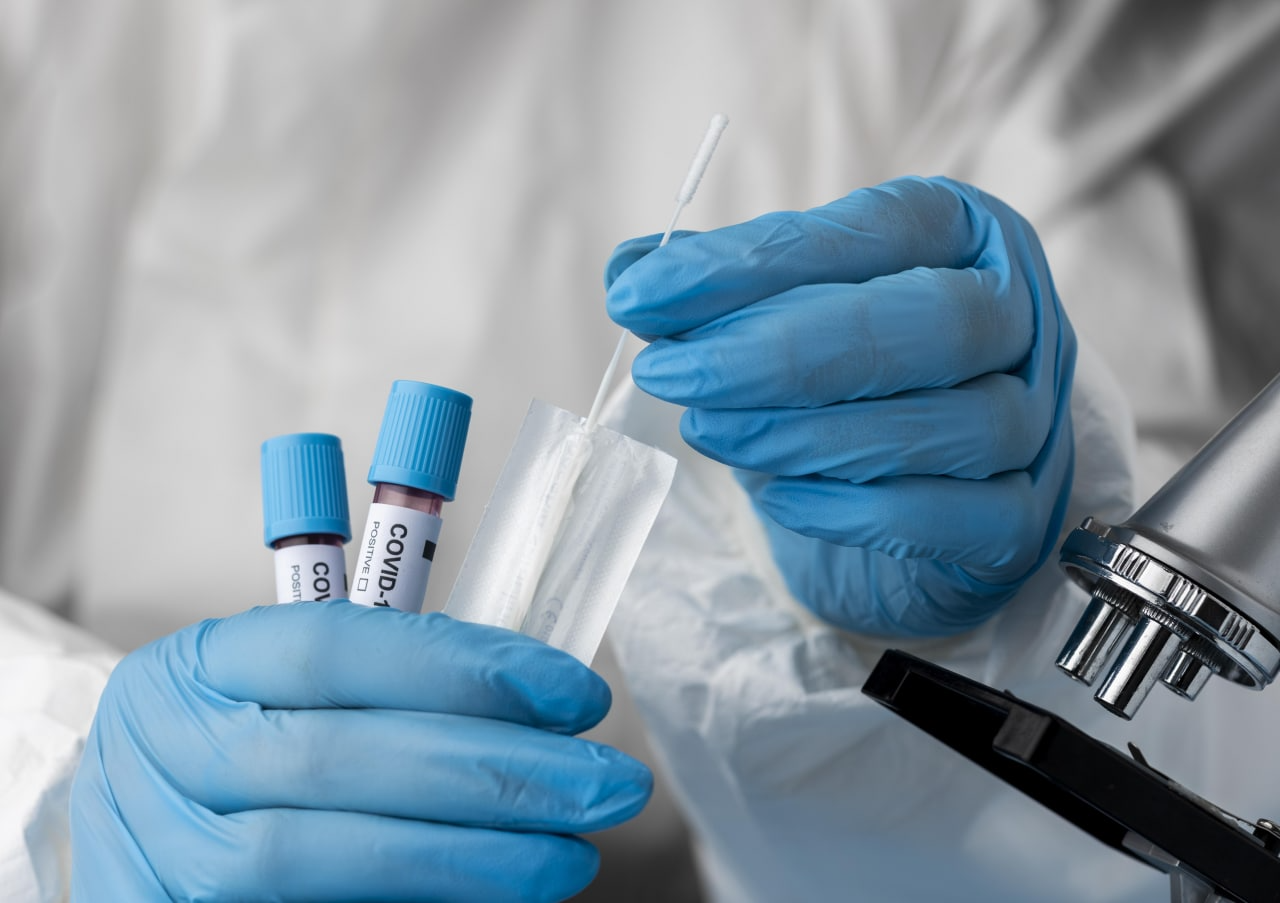Fever is a common secondary symptom, occurring in 36% of hospitalized patients (1). A increase of body`s temperature may be due to infectious or non-infectious mechanisms. Antipyretic medicines, which today are represented by non-steroidal anti-inflammatory drugs normalize it. Modern antipyretics are well tolerated, but in some clinical situations their use is limited. Key points is in our article.
How Does a Fever Develop?
An increase in body temperature of infectious genesis occurs in response to exposure to pyrogens of viral or bacterial etiology and is most common. In response to infection granulocytes and macrophages synthesize and secrete endogenous protein pyrogens, interleukins (IL-1 and IL-6), tumor necrosis factor (TNF) alpha and interferons. The target for the action of endogenous pyrogens is the thermoregulatory center, which regulates the mechanisms of heat production and transfer (1).
The main mediator of fever development is most likely is IL-1, which stimulates the secretion of prostaglandins and pro-inflammatory cytokines. Due to the rebalance of immune homeostasis during infectious inflammation, IL-1 penetrates the blood-brain barrier, where it interacts with neuronal receptors of the thermoregulation center. This increases the activity of cyclooxygenase, which ultimately leads to a change in the intracellular Na+/Ca2+ ratio. Thermoregulatory balance shifts towards increased heat production and reduced heat transfer (2).
Mechanism of Action of Best Antipyretics
Antipyretic analgesics, in particular, acetaminophen, or non-steroidal anti-inflammatory drugs (NSAIDs): acetylsalicylic acid (aspirin), ibuprofen (nurofen), and nimesulide are used as antipyretic drugs today.

Acetaminophen inhibits the synthesis of prostaglandins, primarily in the central nervous system. The drug inhibits cyclooxygenase-1 (COX-1), affecting the centers of pain and thermoregulation. At the same time, acetaminophen practically does not affect the synthesis of prostaglandins in peripheral tissues, therefore it does not change the water and electrolyte metabolism and does not damage the mucous membrane of the gastrointestinal tract. The anti-inflammatory effect of acetaminophen is not classical, however, according to some reports, the drug has a beneficial effect in acute, including post-traumatic inflammatory reactions (3,4).
NSAIDs, unlike acetaminophen, have a non-selective blocking effect on both forms of cyclooxygenase – COX-1 and COX-2, which provides a more powerful anti-inflammatory and analgesic effect due to both central and peripheral actions. An active decrease in mediators’ concentration in the sites contributes to a decrease of the exudative and proliferative phases of inflammation, which is beneficial in the development of complications: bronchitis, pneumonia, pericarditis, myocarditis and others (5). Consider the pharmacological properties of modern antipyretics in more detail.
Acetaminophen
Acetaminophen has demonstrated efficacy comparable to therapeutic doses of many NSAIDs, including ibuprofen, diclofenac, and ketorolac, with fewer side effects (6).
The antipyretic effect of the drug, like NSAIDs, is to reduce elevated body temperature. Study published in 2018 indicated the immunotropic activity of acetaminophen (7). It has been experimentally proven that the drug enhances the production of TNF alfa, activates the proliferation of T-lymphocytes, and increases the activity of natural killers.
Acetaminophen is one of two drugs (with ibuprofen) that the World Health Organization has recommended for use as antipyretic analgesics in pediatric practice. Moreover, acetaminophen is considered the drug of choice in such cases, as it is safer (5). In addition, acetaminophen remains the first-line drug for the treatment of fever for pregnant women.
Acetaminophen is generally well tolerated and has no age restrictions. There are concerns about the safety of the drug due to the possible development of hepatotoxicity and asthma in the long term. However, recent studies have shown that the effect of acetaminophen on the risk of developing asthma is minimal (8). The most serious side effect of acetaminophen is hepatotoxicity, which occurs with an overdose of the drug (more than 12 g or 150 mg / kg).
Non-Steroidal Anti-Inflammatory Drugs
Acetylsalicylic acid irreversibly inhibits cyclooxygenase due to acetylation of the active center of the enzyme. Restoration of enzyme activity is possible only after the synthesis of its new molecules. The drug modulates the synthesis of prostaglandins by irreversible inhibition of COX-1, including in platelets, and to a lesser extent COX-2, while inhibiting the synthesis of prostaglandins, thromboxanes and prostacyclins. As a result, three effects of the drug occur: antithrombotic, analgesic / antipyretic and anti-inflammatory.
Acetylsalicylic acid does not lower body temperature, increased due to physical activity or overheating, and does not affect the normal temperature regime of the body. The drug is not recommended for use in children under 12 years of age without a thorough assessment of the benefit-risk ratio, which is associated with the risk of developing Reye's syndrome. This is a rare dangerous condition that manifests itself as encephalopathy due to cerebral edema and hepatosis. It can occur in children during the treatment of fever of viral etiology (with influenza, measles, chicken pox) with acetylsalicylic acid preparations.

Ibuprofen, originally intended for use as a treatment for rheumatoid arthritis, today occupies one of the leading places among NSAIDs, that use as an antipyretic. The drug also has a stimulating effect on the production of endogenous interferon and exhibits an immunomodulatory effect. In addition, ibuprofen is widely used in the treatment of inflammatory and degenerative diseases of the musculoskeletal system (myalgia, arthralgia, neuralgia, cephalgia, toothache, bursitis, etc.). In pediatric practice, ibuprofen is used for fever, including post-immunization and hyperthermia of non-febrile etiology, with febrile convulsions. The drug is used for infants aged 3 months.
In a comparative study in which 351 children were included, the effectiveness of ibuprofen, acetylsalicylic acid and acetaminophen was investigated (9). Ibuprofen showed the most potent anti-inflammatory and antipyretic effects. Moreover, of all NSAIDs, the drug has the most favorable gastrointestinal tolerance (9, 10). It has been proven that ibuprofen does not increase the risk of developing bronchospasm in children with bronchial asthma and allergic diseases .
There is evidence that the use of ibuprofen, like other NSAIDs, in varicella is associated with an increased risk of skin and soft tissue infections (11).
For pregnant ibuprofen, like other NSAIDs, is not recommended from the 20th week of pregnancy due to the possible development of oligohydramnios and / or kidney pathology in newborns. It is also not recommended to use the drug for a period of less than 20 weeks.
Nimesulide is another NSAID that is used for fever. It is a blocker primarily of COX-2. It is appropriate to recall that the gastrointestinal complications associated with taking NSAIDs are mainly determined by an increase in the activity of COX-1 in the mucous membrane of the digestive system.
The class-specific effect on cyclooxygenase-2 provides the typical effects of NSAIDs - antipyretic, analgesic and anti-inflammatory. In addition, nimesulide suppresses the hyperproduction of the main pro-inflammatory cytokines and exhibits an antihistamine effect.
Nimesulide is the most toxic among all NSAIDs. According to studies, the drug exhibits hepatotoxic effects, including severe ones (12). Nimesulide is not registered in the USA, Australia, Canada and most European countries. In countries where nimesulide is registered, its use is allowed from the age of 12.
|
Drug |
Effects |
Pediatric patients, pregnancy, lactation |
Side effects |
Contradictions |
|
Acetaminophen |
antipyretic analgesic |
Has no age restrictions
Used during all stages of pregnancy for analgesia and antipyresis
Used in nursing women |
Hepatic: 1% to 10% –- increased aspartate aminotransferase Frequency not reported – liver failure;
Gastrointestinal: 10% or more – nausea; (up to 34%), Vomiting (up to 15%); 1% to 10% – Abdominal pain, diarrhea, constipation, dyspepsia, enlarged abdomen
Hypersensitivity and others
|
Hypersensitivity
Severe hepatic impairment or severe active liver disease |
|
Aspirin |
antipyretic analgesic anti-inflammatory |
Do not use in children and teenagers with varicella or influenza, unless directed by a clinician children from 6 months
Avoid use of in pregnant women at about ≥30 weeks’ gestation; if use required between about 20 and 30 weeks’ gestation, use lowest effective dosage and shortest possible duration of treatment
Use in nursing women not recommended
|
Gastrointestinal: 1% to 10% – dyspepsia;
Hematologic – 1% to 10%: increased bleeding tendencies
|
Hypersensitivity
History of asthma, urticaria, or other sensitivity reaction precipitated by other NSAIAs.
Children or adolescents with viral infections (with or without fever) |
|
Ibuprofen |
antipyretic analgesic anti-inflammatory |
Children from 3 months;
Contraindicated in last trimester of pregnancy: NSAIDs should be avoided at 20 weeks gestation and late
Used in nursing women |
Common: abdominal pain, acid or sour stomach, cloudy urine, diarrhea, excess air or gas in stomach or intestines heartburn, indigestion itching skin and others
|
Hypersensitivity to ibuprofen and other NSAIDs.
Asthma that is aspirin or NSAID sensitive
Active gastrointestinal bleeding or peptic ulceration. |
Colleagues, haven't you joined our PharmaCourses Telegram chats yet? In the chats of more than 6,000 participants, you can always discuss breaking news and difficult situations in a pharmacy or clinic with your colleagues. Places in the chats are limited, hurry up to get there.
Telegram chat for pharmacists: https://t.me/joinchat/V1F38sTkrGnz8qHe
Telegram chat fo physicians: https://t.me/joinchat/v_RlWGJw7LBhNGY0
Bibliography
- Ludwig J., McWhinnie H. Antipyretic drugs in patients with fever and infection: literature review //British journal of nursing. 2019; 28 (10): 610-618.
- Hersh E. V., Moore P. A., Ross G. L. Over-the-counter analgesics and antipyretics: a critical assessment //Clinical therapeutics. 2000; 22 (5): 500-548.
- Botting R. Antipyretic therapy //Front Biosci. 2004; 9 (956): e66.
- Prescott L. F. Paracetamol: Past, Present, and Future //American Journal of Therapeutics. 2000; 7 (2): 143-148.
- Goodman & Gilman's The Pharmacological Basis of Therapeutics. 12th edition.
- Sharma C. V., Mehta V. Paracetamol: mechanisms and updates //Continuing Education in Anaesthesia, Critical Care & Pain. 2014; 14 (4): 153-158.
- Gomaa S. Adverse effects induced by diclofenac, ibuprofen, and paracetamol toxicity on immunological and biochemical parameters in Swiss albino mice //The journal of basic and applied zoology. 2018; 79 (1): 1-9.
- Star K., Choonara I. How safe is paracetamol? //Archives of Disease in Childhood. 2015; 100 (1): 73-74.
- Autret E. et al. Evaluation of ibuprofen versus aspirin and paracetamol on efficacy and comfort in children with fever //European journal of clinical pharmacology. 1997; 51 (5): 5г367-371.
- Bjarnason I. Ibuprofen and gastrointestinal safety: a dose-duration-dependent phenomenon //Journal of the Royal Society of Medicine. 2007; 100: 11-14.
- Mikaeloff Y., Kezouh A., Suissa S. Nonsteroidal anti-inflammatory drug use and the risk of severe skin and soft tissue complications in patients with varicella or zoster disease // Br J Clin Pharmacol. 2008; 65 (2): 203–209.
- Merlani G., Fox M., Oehen H.P. et al. Fatal hepatotoxicity secondary to nimesulide // Eur.J. Clin. Pharmacol. 2001; 57: 321–326.







